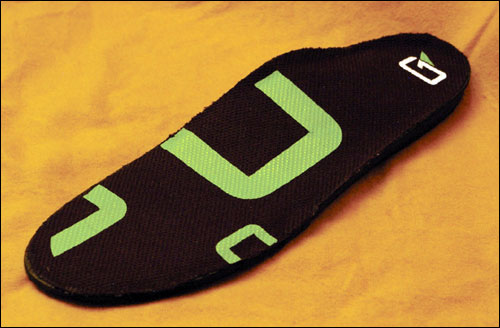Telemedicine—which allows health-care providers to consult with, diagnose and treat patients remotely—could help stem the soaring costs of health care. One example: Researchers at AT&T Labs have developed a wireless device to monitor seniors in their homes. It’s designed to detect signs of impending falls, so preventive measures can be taken.
AT&T’s “Smart Slippers,” developed in partnership with Texas Tech University, are based on technology used in interactive games. Each slipper’s sole is fitted with pressure sensors, an accelerometer and a ZigBee communications device to monitor a patient as he or she walks. Every sensor has a unique ID, and as the person walks, pressure data is communicated via ZigBee technology to a base station in the home, which transmits the information to a remote host computer. The accelerometer determines the patient’s speed of motion.
Researchers at Texas Tech’s geriatric care facility are using the technology to study how patients walk, to see if they can detect danger signs. “It’s our hope that the data generated from the study, and gait stability signatures extracted from such data, can alert care personnel to ‘abnormal’ walking for particular patients or generally ‘dangerous’ walking styles, so precautions can be taken,” says Lusheng Ji, a principal member of AT&T Labs’ technical research staff.
“For example, many falls can be triggered by other medical conditions, such as blood pressure abnormalities or drug interactions that lead to instability. Early detection of instability might allow the patient to be warned so other home measurement devices, such as a glucometer or blood pressure cuff, can be used to find the cause and correct it before it leads to a fall.”
AT&T is also working on a “Smart Pill Minder,” which can tell a patient how many pills to take from a specific chamber in the device at a particular time. When the patient opens a chamber, that information is transmitted to a ZigBee base station, then transferred over the Internet or a cellular network to a central server. A doctor can log on to a secure portal from any location, view the patient’s health record and confirm the prescribed pills are being taken on schedule.
As for when Smart Slippers and Smart Pill Minder might come to market, that depends on AT&T’s business strategies, Ji says, noting that some wireless remote-monitoring devices from AT&T and other companies are already being used by at-home patients. “Network and database services are currently available from AT&T and others to accept such data and present it online,” he says. “More leading-edge devices, like the insole gait sensors, must undergo clinical trials to establish efficacy, and these devices will undoubtedly take somewhat longer to reach the general market.”


